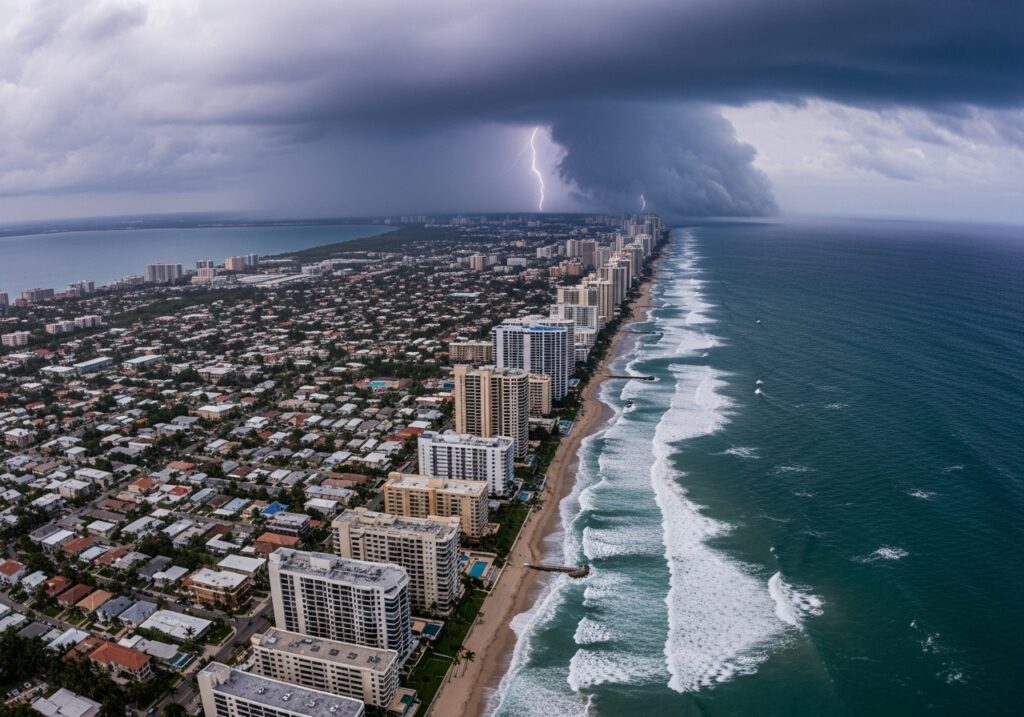If you listen to the climate alarmists, you’d think the Earth is on fire, the oceans are boiling, and hurricanes are battering our coastlines with historically unprecedented fury. Their latest talking point? That the dollar cost of storm damage proves that storms are getting worse. It’s a clever little trick—equating rising insurance claims with rising storm intensity. But like most of their arguments, this one collapses under scrutiny.
Let’s get one thing straight: more expensive storms don’t mean stronger storms. What they actually mean is that there’s more expensive stuff in the path of storms. More houses, more infrastructure, more people with more wealth—especially in high-risk areas. That’s not climate change. That’s urban development and inflation.
The National Oceanic and Atmospheric Administration (NOAA) reports that since 1980, the U.S. has seen 403 weather disasters costing over $1 billion each. In 2024 alone, there were 27 such events, totaling $182.7 billion in damages. Climate activists point to this as evidence that “climate change” is making storms worse. But they’re missing—or ignoring—a fundamental detail: the $1 billion threshold hasn’t kept pace with inflation.
NOAA itself admits that 57 events originally below the billion-dollar threshold are now counted as billion-dollar disasters simply due to inflation. So, what we’re really measuring isn’t storm severity. We’re measuring the declining value of the dollar and the rising cost of living.
Look at the numbers. Hurricane Katrina caused $125 billion in damage in 2005—that’s about $200 billion today. Hurricane Harvey’s $125 billion in 2017 would be $159 billion in 2024 dollars. The 1926 Great Miami Hurricane cost $105 million back then, but in today’s dollars, it would be a staggering $236 billion. Clearly, the financial damage metric is a moving target—and a misleading one at that.
But inflation isn’t the only factor. There’s also the fact that millions more Americans now live in high-risk coastal areas. According to the Washington Post, the 15 counties affected by Hurricane Milton’s winds grew from 3.7 million people in 1980 to 9.1 million in 2023. Economic activity in those areas has quadrupled. That means more homes, more businesses, more infrastructure—all sitting in the path of storms.
The Center for Climate and Energy Solutions reports that nearly 50 million homes and $1.4 trillion in assets are located within just an eighth of a mile of the U.S. coast. Between 1970 and 2010, coastal populations grew by 35 million people. So when a hurricane hits, of course the damage totals are climbing—not because the storms are more powerful, but because there’s more to destroy.
And when researchers adjust for inflation, population growth, and economic development, the so-called “trend” in worsening storms disappears. A study in *Nature Sustainability* found that once you control for the growth in people and property, there’s no increase in hurricane damage over time. Likewise, the *Bulletin of the American Meteorological Society* found no significant trend in normalized U.S. hurricane losses since 1900.
The Environmental Protection Agency’s own data shows that since 1878, the number of hurricanes forming in the North Atlantic has remained remarkably stable—about six to seven per year, with roughly two making U.S. landfall. No explosion in frequency. No apocalyptic trend.
A 2021 study in *Nature Communications* echoed this point, stating that the apparent increase in hurricane frequency is “consistent with changes in observing practices” and “not likely a true climate trend.” Translation: we’re just better at detecting and reporting storms now than we were a century ago.
So let’s cut through the noise. The Left wants to use inflated dollar figures and misleading statistics to push a radical climate agenda rooted in fear and control. But the facts don’t lie. Storms aren’t getting more frequent or more intense. What’s changed is where we build, how much we spend, and how we measure damage.
Storm damage is a real issue—but it’s driven by policy decisions, not carbon emissions. If we want to reduce losses, we should stop building multimillion-dollar condos on hurricane-prone coastlines, not strangle the economy with trillion-dollar green boondoggles.
Once again, the climate narrative depends not on facts, but on fear. It’s time we stop letting the Left weaponize weather to control our lives.

